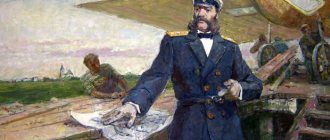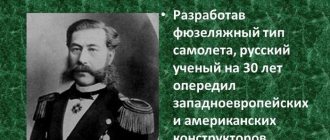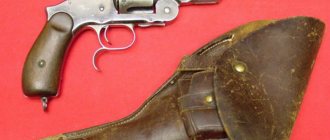Otto von Bismarck is considered one of the most influential and controversial figures in German history: a diplomat and reformer who unified Germany through three bloody wars and then virtually single-handedly led the country for 20 years. Bismarck was a staunch monarchist, but the young emperor dismissed him, not wanting to be in the shadow of the powerful chancellor. Despite his stormy political career, Otto did not neglect carnal pleasures and managed to fall in love with a Russian princess. About the luxurious lifestyle of the commander - in the material of Lenta.ru from the series about the rulers of all times and peoples.
Bismarck family
Otto was born on April 1, 1815 on the estate of Schönhausen, on the outskirts of Brandenburg, north of Magdeburg, which was located in the Prussian province of Saxony. His family, starting from the 14th century, belonged to the noble class, and many ancestors held high government positions in the kingdom of Prussia. Otto always remembered his father with love, considering him a modest man. In his youth, Karl Wilhelm Ferdinand served in the army and was demobilized with the rank of cavalry captain (captain). His mother, Louise Wilhelmina von Bismarck, née Mencken, was middle class, heavily influenced by her father, quite rational and of strong character. Louise concentrated on raising her sons, but Bismarck, in his memoirs of childhood, did not describe the special tenderness traditionally emanating from mothers.
The marriage produced six children; three of his siblings died in childhood. They lived a relatively long life: an older brother, born in 1810, Otto himself, born fourth, and a sister born in 1827. A year after the birth, the family moved to the Prussian province of Pomerania, the town of Konarzewo, where the future chancellor spent the first years of his childhood. Here my beloved sister Malvina and brother Bernard were born. Otto's father inherited the Pomeranian estates from his cousin in 1816 and moved to Konarzewo. At that time, the estate was a modest building with a brick foundation and wooden walls. Information about the house is preserved thanks to the older brother's drawings, which clearly show a simple two-story building with two short one-story wings on either side of the main entrance.
Russian Liebe
The story about Bismarck and Rossi would be incomplete if Bismarck did not have Russian love.
There was one, her name was Katerina Orlova-Trubetskaya.
They had a whirlwind romance in the resort of Biarritz.
Only one week in her company was enough for Bismarck to become captivated by the charms of this young, attractive 22-year-old woman.
The story of their passionate love almost ended in tragedy.
Katerina’s husband, Prince Orlov, was seriously wounded in the Crimean War and did not take part in his wife’s fun festivities and bathing.
But Bismarck accepted.
She and Katerina almost drowned.
They were rescued by the lighthouse keeper.
On this day, Bismarck would write to his wife: “After several hours of rest and writing letters to Paris and Berlin, I took a second sip of salt water, this time in the harbor when there were no waves.
A lot of swimming and diving, dipping into the surf twice would be too much for one day.”
This incident became a wake-up call for the future chancellor; he never cheated on his wife again, and there was no time left - big politics captured him.
Childhood and youth
At the age of 7, Otto was sent to an elite private boarding school in Berlin, then he continued his education at the Graue Kloster gymnasium. At the age of seventeen, on May 10, 1832, he entered the law faculty of the University of Göttingen in Hanover, where he spent just over a year. He took a leading place in the social life of students. From November 1833 he continued his studies at the University of Berlin. His education allowed him to engage in diplomacy, but at first he devoted several months to purely administrative work, after which he was transferred to Potsdam to the judicial field in the court of appeal. The young man did not work in the civil service for long, since it seemed unthinkable and routine for him to maintain strict discipline. He worked in 1836 as a government clerk in Aachen, and the following year in Potsdam. This is followed by a year of volunteer service in the Greifswald Rifle Battalion Guard. In 1839, he and his brother took over the management of the family estates in Pomerania after the death of their mother.
He returned to Konarzevo at the age of 24. In 1846, he first rented out the estate, and then sold the property inherited from his father to his nephew Philip in 1868. The property remained in the von Bismarck family until 1945. The last owners were brothers Klaus and Philipp, sons of Gottfried von Bismarck.
In 1844, after his sister's marriage, he went to live with his father in Schönhausen. As a passionate hunter and duelist, he gains a reputation as a "savage".
Between a duel and drunkenness
The future ruler was born into the family of a wealthy Prussian landowner. Since childhood, he opposed submission and discipline. While at school he had many conflicts with teachers, and in his first year at the University of Göttingen he was more often found in beer halls than at lectures.
Otto himself laughed that during his years of studying at the university he gained invaluable experience: he learned to drink all night long and at the same time get up cheerful in the morning
He took part in several dozen duels, during the first of which he received a scar on his cheek. Bismarck later said more than once that his opponent acted dishonestly, striking on the sly.
Young Otto defended monarchical views, although at that time liberalism was fashionable among young people. He emerged victorious from every duel, gaining undeniable authority among other students.
German Chancellor Otto von Bismarck and Kaiser Wilhelm II at Bismarck's residence in Friedrichsruh, October 30, 1888
Photo: Hulton Archive/Getty Images
Bismarck devoted himself with passion to everything that interested him, be it hunting, horse riding or fencing. Among his friends and acquaintances he was nicknamed “mad Bismarck” for this. He read a lot, without missing hunting seasons and drinking parties, lost large sums at cards, changed his heart, shot at targets, rode around other people's lands, did not give way to peasant girls...
The overflowing energy required a much larger field of activity than the life of an ordinary landowner could provide. And Bismarck decided to go into big politics. At that time, revolutionary sentiments reigned in Prussia. Having joined the Conservative Party, he began to build a political and diplomatic career.
Carier start
After the death of his father, Otto and his brother take an active part in the life of the area. In 1846, he began working in the office responsible for the operation of the dams, which served as protection against flooding of the regions located on the Elbe. During these years he traveled extensively in England, France and Switzerland. The views inherited from his mother, his own broad outlook and critical attitude towards everything, disposed him to free views with an extreme right-wing bias. He quite original and actively defended the rights of the king and the Christian monarchy in the fight against liberalism. After the outbreak of the revolution, Otto proposed to bring peasants from Schönhausen to Berlin to protect the king from the revolutionary movement. He did not take part in the meetings, but was actively involved in the formation of the Union of the Conservative Party and was one of the founders of the Kreuz-Zeitung, which has since become the newspaper of the monarchist party in Prussia. In the parliament elected at the beginning of 1849, he became one of the sharpest speakers among the representatives of the young nobility. He figured prominently in discussions about the new Prussian constitution, always defending the king's authority. His speeches were distinguished by a unique style of debate combined with originality. Otto understood that party disputes were merely a struggle for power between revolutionary forces and that no compromise was possible between these principles. There was also a clear position on the foreign policy of the Prussian government, in which he actively opposed plans to create a union that would force submission to a single parliament. In 1850, he held a seat in the Erfurt parliament, where he zealously opposed the constitution created by parliament, foreseeing that such government policies would lead to a struggle against Austria, during which Prussia would be the loser. This position of Bismarck prompted the king in 1851 to appoint him first as the chief Prussian representative and then as a minister in the Bundestag in Frankfurt am Main. This was a rather bold appointment, since Bismarck had no experience in diplomatic work.
Here he is trying to achieve equal rights for Prussia and Austria, lobbying for recognition of the Bundestag and is a supporter of small German associations, without Austrian participation. During the eight years he spent in Frankfurt, he became extremely well versed in politics, making him an indispensable diplomat. However, the period he spent in Frankfurt was associated with important changes in political views. In June 1863, Bismarck published regulations regulating freedom of the press and the Crown Prince publicly abandoned the policies of his father's ministers.
Creation of a battleship
According to the terms of the Versailles agreements, which put an end to the First World War, Germany did not have the right to create warships with a displacement of over 35 thousand tons. Until 1933, few people were interested in this, since the population did not have the choice of “guns or butter,” because there was neither one nor the other. Hitler's rise to power changed everything.
Having promised to make Germany great again, the Fuhrer eagerly rushed to implement his plans. One of the most important aspects was the creation of a navy capable of challenging the then powerful ships of His Royal Majesty the British Monarch.
The Deutschland-class battleships in service brought sardonic grins on the faces of the British, since in both armament and displacement they were not even close to the Royal Navy. Actually, the British dubbed these ships “pocket battleships” and did not take them seriously.
Plan Z was developed, according to which by 1948 the German fleet was to become the strongest in the world. By this time, eight Bismarck-class battleships, four aircraft carriers, about five heavy cruisers and several hundred destroyers and destroyers should have been ready.
The flagships of the fleet were to be the firstborn of the newborn Reich, the ships Bismarck and Tirpitz.
On July 1, 1936, the battleship Bismarck was laid down at the Blohm & Voss shipyard located in Hamburg. During construction, the French, unlike the British, who took German pocket battleships more seriously, launched the battleship Strasbourg and modernized the Dunkirk, so Hitler demanded an increase in size in order to overtake his sworn enemies.
On February 14, 1939, the Fuhrer received a giant steel “Valentine”. All the most important officials of the Reich were present at the launching of the ship, which received the name of Chancellor Bismarck, who shackled Germany with “iron and blood” in the 19th century. There was also the chancellor's granddaughter, Dorothea von Lowenfeld. It was she who became the godmother of the battleship, breaking a bottle of champagne on its side.
For about two more years, the battleship was tested and refined to its maximum characteristics, and only by the spring of 1941 could the ship go into combat operations.
Bismarck in the Russian Empire
During the Crimean War, he advocated an alliance with Russia. Bismarck was appointed Prussian ambassador to St. Petersburg, where he stayed from 1859 to 1862. Here he studied the experience of Russian diplomacy. By his own admission, the head of the Russian Foreign Ministry, Gorchakov, is a great expert in diplomatic art. During his time in Russia, Bismarck not only learned the language, but also developed relationships with Alexander II and with the Dowager Empress, a Prussian princess.
During the first two years he had little influence on the Prussian government: the liberal ministers did not trust his opinion, and the regent was upset by Bismarck's willingness to create an alliance with the Italians. The estrangement between King William and the liberal party opened the path to power for Otto. Albrecht von Roon, who was appointed Minister of War in 1861, was his old friend, and thanks to him Bismarck was able to monitor the state of affairs in Berlin. When a crisis arose in 1862 due to parliament's refusal to vote on the funds needed to reorganize the army, he was summoned to Berlin. The king still could not decide to increase the role of Bismarck, but clearly understood that Otto was the only person who had the courage and ability to fight parliament.
After the death of Frederick William IV, his place on the throne was taken by the regent William I, Frederick Ludwig. When Bismarck left his post in the Russian Empire in 1862, the Tsar offered him a position in the Russian service, but Bismarck refused.
In June 1862 he was appointed ambassador to Paris under Napoleon III. He studies in detail the school of French Bonapartism. In September, the king, on the advice of Roon, summoned Bismarck to Berlin and appointed him prime minister and minister of foreign affairs.
Threats and cunning
In achieving political goals, Bismarck did not stand on ceremony: he could throw thunder and lightning, crush his opponents in fierce debates. At the same time, if necessary, during negotiations he behaved with emphatic politeness and courtesy. He preferred to resolve territorial disputes by force. He saw no other way to unite Germany other than “iron and blood.”
However, Otto acted quite cunningly. He provoked Prussia's war with France by falsifying the "Ems Dispatch" - a telegram sent through him by William I to Napoleon III
The chancellor corrected the message in such a way that its content became offensive to the French emperor. After this, Bismarck published the document, considered secret, in leading German media. France declared war on Prussia, in which it was defeated and lost Alsace and Lorraine. Prussia also received an indemnity of five billion francs.
Portrait of Napoleon III
Image: Jean-Hippolyte Flandrin
The Chancellor's stern character was also evident at home - he put his own interests above family ties. In 1881, his son Herbert decided to marry the divorced Princess Elisabeth zu Carolat-Beuthen. She professed Catholicism, and her many relatives were opponents of Bismarck. Bismarck forbade his son to marry her, and acted, as usual, harshly. First, he disinherited his son and then threatened suicide. Herbert had no choice but to obey his father's will.
At the same time, Bismarck considered himself a sentimental and dreamy person, believing that artists, depicting him in portraits as an imperious ruler - the “iron chancellor,” were making a mistake. Otto always enjoyed life: even after becoming chancellor, he got up at noon and went to bed in the morning. He especially loved dogs; the Bismarcks had Great Danes at home. The owner was so attached to his pets that he fed them by throwing pieces of meat from the table directly onto the floor. When hiring servants, Otto preferred those his dogs liked.
New field
Bismarck's main responsibility as minister was to support the king in reorganizing the army. The dissatisfaction caused by his appointment was serious. His reputation as a categorical ultra-conservative, reinforced by his first speech regarding the belief that the German question could not be settled only by speeches and parliamentary resolutions, but solely by blood and iron, increased the fears of the opposition. There can be no doubt about his determination to bring to an end the long struggle for the supremacy of the dynasty of Electors of the House of Hohenzollern over the Habsburgs. However, two unforeseen events completely changed the situation in Europe and forced the confrontation to be postponed for three years. The first was the outbreak of rebellion in Poland. Bismarck, heir to the old Prussian traditions, remembering the contribution of the Poles to the greatness of Prussia, offered his assistance to the Tsar. By doing this he placed himself in opposition to Western Europe. The political dividend was the tsar's gratitude and Russian support. Even more serious were the difficulties that arose in Denmark. Bismarck was again forced to confront national sentiment.
Walk to Valhalla
In May 1941, the German naval headquarters planned a major operation designed to disrupt the supply of the British Isles and scare the British to death with the increased power of the German fleet. The calculation was based on the fact that the Bismarck was stronger than any British ship one on one, but several ships could cut it to pieces.
On May 18, the Bismarck and the accompanying cruiser Prinz Eugen left Danzig and headed for Norway.
According to the plan, if a fleet or caravan is discovered, the battleship should engage in battle and deal with the armed ships, and the heavy cruiser should sink the merchants. Having reached Bergen, Norway, the ships stopped to rest. The Prince began to take on additional fuel.
For reasons that are unclear, the Bismarck did not load anything that would later prove to be a serious mistake. While both ships stood peacefully in Norway, the British Admiralty was alerted to the news that the strongest German naval group was going to sea.
This was reported by reconnaissance planes, and the same data was brought by Norwegian partisans from the Resistance. By the time they left the fjord, several formations of ships were rushing towards the German group, including the English flagship Hood.
| Characteristics | "Bismarck" | "Hood" |
| Displacement, t | 50 900 | 46 480 |
| Power, hp | 150 170 (110 MW) | 144,000 (106 MW) |
| Artillery | 8 × 380 mm SKC34 (4 × 2), 12 × 150 mm (6 × 2) | 8 × 381mm (15″/42 Mark I) (4×2) 12×140 mm |
| Crew, people | 2200 | 1477 |
On the evening of May 23, British cruisers spotted German ships, but did not dare to engage in battle. All night the British pursued the Germans, gathering forces and spending time searching for the main question of whether to attack the Bismarck or not. At half past five in the morning, British Admiral Holland finally decided to attack the squadron, and at 05:52 the Hood opened fire.
True, in the fog, the flagship began to shoot at the Prinz Eugen, but the development of events showed that this was not so important. At 6.00 a salvo from the Bismarck hit the Hood. Immediately, the ammunition detonated in the area of the pipe, and the beauty and pride of His Majesty’s fleet, breaking in half, sank. Of the crew of 1,418, three were rescued; Holland was not among the survivors.
The Prince of Wales, which was accompanying the Hood, however, managed to inflict fatal damage on the German battleship. One of the shells hit an oil storage tank, and fuel oil began to flow into the ocean. Following this trail, the English squadron rushed in pursuit of the damaged Germans who were leaving for the base.
The Prinz Eugen was ordered to hunt for merchant ships, so after the battle with the flagship, the cruiser abandoned the Bismarck. The battleship itself, on which several hits caused serious but not fatal damage, headed for the French coast, already occupied by the Germans. The British pursued the battleship for several days, lost it and found it again.
The decisive role in the unfolding events was played by the only aircraft carrier Ark Royal, whose torpedo-bomber seaplanes attacked the battleship several times.
The antediluvian airplanes of the British were so slow and flew so low that the German anti-aircraft gunners simply could not see them against the backdrop of the sea.
As a result, one of the torpedoes hit the rudder, and the Bismarck began to write circles, as if under a compass, instead of going straight to France. The approaching battleships Rodney and King George V opened fire on the ship, which was powerless in maneuverability. The shells of these ships systematically shot down, first the rangefinder post, then the main caliber turrets.
One of the 406-mm shells hit the wheelhouse, killing the ship's command and Admiral Lutyens' staff. The Fuhrer's pride turned into an ideal target and punching bag for English sailors embittered by the death of the Hood. It was then calculated that that morning the English fleet fired 2,800 shells of various calibers, and 700 of them hit the target.
Despite the enormous damage, the failure of all main caliber guns and the death of officers, the Bismarck did not lower the flag. This gave the British the right to hammer the hull with shells and torpedoes until someone opened the seams on the sinking battleship. At 10:39, the battleship, turning upside down with its keel, sank 380 miles southwest of the Irish coast.
Several crew members who were on the hull at the time of the sinking gave a military salute to the sinking ship. Organized rescue operations made it possible to catch 110 people from the water, another 5 were rescued by a German submarine that arrived a day later. The crew of His Majesty's destroyer Cossack rescued the cat, christening him Oscar.
True, he did not bring good luck to the ships on which fate threw him. The Cossack will be sunk by a torpedo, after which Oscar will move to the same Ark Royal. In a short time, this aircraft carrier will also be at the bottom, already off the coast of Malta. But the cat will survive again. Unsinkable Sam, previously known as Oscar, will then, out of harm's way, be taken to Belfast, where he will end his days in peace and quiet in 1955.
The investigation into the circumstances of the death of the Bismarck will excite minds for many years to come.
The version that the ship was sunk by the crew to avoid capture will be indirectly confirmed in 2002. The site of the sinking, the search for which was successful in 1989, attracted the famous creator of the Titanic and underwater filming fanatic James Cameron.
Using the latest equipment, in 2002 he made a unique film about the state of the ship resting at the bottom. It was he who discovered the open seams. Research, however, was hampered by international legislation, according to which Bismarck is a mass military grave, and it must be examined very carefully.
For naval enthusiasts, both the battleship itself and the circumstances of its death are one of the main stories of the fleet of the Second World War. The circumstance of the heroic struggle of the Bismarck crew throughout the entire campaign is attractive. Despite the enormous superiority of the British at sea and numerous difficulties, the German sailors fought with honor and died with honor.
The formation of the image of the ship was also influenced by the time of its destruction. By May 1941, the war had not yet become violent, and the almost chivalrous behavior of both fleets raised the prestige of the most powerful German battleship.
German reunification
Through the efforts of Bismarck's political will, the North German Confederation was founded by 1867.
The North German Confederation included:
- Kingdom of Prussia,
- Kingdom of Saxony,
- Duchy of Mecklenburg-Schwerin,
- Duchy of Mecklenburg-Strelitz,
- Grand Duchy of Oldenburg,
- Grand Duchy of Saxe-Weimar-Eisenach,
- Duchy of Saxe-Altenburg,
- Duchy of Saxe-Coburg-Gotha,
- Duchy of Saxe-Meiningen,
- Duchy of Brunswick,
- Duchies of Anhalt,
- Principality of Schwarzburg-Sondershausen,
- Principality of Schwarzburg-Rudolstadt,
- Principality of Reiss-Greiz,
- Principality of Reiss-Gera,
- Principality of Lippe,
- Principality of Schaumburg-Lippe,
- Principality of Waldeck,
- Cities: Hamburg, Lubeck and Bremen.
Bismarck founded the union, introduced direct suffrage for the Reichstag and the exclusive responsibility of the Federal Chancellor. He himself took up the post of chancellor on July 14, 1867. As chancellor, he controlled the country's foreign policy and was responsible for all the internal policies of the empire, and his influence was visible in every department of state.
About teachers and training
“The attitude of the state towards the teacher is a state policy that indicates either the strength of the state or its weakness.” “Success in war is determined by two factors: a new type of gun and a school teacher.”
But the “Iron” Chancellor said this very subtly and strongly. Only a complete fool will not understand and disagree about superiority in weapons. It is obvious.
But the fundamental importance of a “good teacher” - or a competent and effective education system in the country, which ensures that the ranks of society are filled with educated and well-mannered adult citizens (individuals) - is the foundation of a strong power. A powerful nation is distinguished by its health (health care system) and moral development (primary, secondary and higher education systems). Whoever has this is an invincible nation.
“Study as if you were to live forever; live as if you were going to die tomorrow.”
It is necessary to study - to master the necessary knowledge and gain useful experience - continuously. If a person stops learning, he becomes stagnant and eventually fails to meet ever-changing demands. It becomes unclaimed (simply not needed). This is the most terrible condition for any person. There is nothing worse than the torture of idleness.
Fight against the Roman Catholic Church
After the unification of the country, the government faced the question of unification of faith more urgently than ever. The core of the country, being purely Protestant, faced religious opposition from adherents of the Roman Catholic Church. In 1873, Bismarck not only came under great criticism, but was also wounded by an aggressive believer. This was not the first attempt. In 1866, shortly before the outbreak of war, he was attacked by Cohen, a native of Württemberg, who wanted to save Germany from a fratricidal war.
The Catholic Center Party unites, attracting the nobility. However, the Chancellor signs the May laws, taking advantage of the numerical superiority of the national liberal party. Another fanatic, apprentice Franz Kuhlmann, on July 13, 1874, makes another attack on the authorities. Long and hard work affects the health of a politician. Bismarck resigned several times. After his retirement he lived in Friedrichsruch.
Boredom
Bismarck's main official duties during his life in St. Petersburg and Moscow were consular: about 40 thousand subjects of the Kingdom of Prussia lived in Russia at that time.
“I am a lawyer, a policeman, a manager representing the interests of all these people and corresponding directly with Russian institutions on related matters.
“I often have to sign up to a hundred official papers a day,” Otto wrote to his brother.
Bismarck's temperament did not suit such paperwork.
Visits, dinner parties, official receptions, attending ballet performances (“in all the boxes there are very beautiful ladies,” wrote Bismarck) - all this could not be the ultimate dream of an ambitious politician.
By the way, as for the “very beautiful” Russian ladies, the stately, two meters tall, personable, with a lush mustache, the 44-year-old Prussian diplomat enjoyed great success with them.
However, it was not balls and ladies that captivated the future chancellor; he persistently penetrated into Russian life and comprehended the mysterious Russian soul, realizing that the destinies of the two countries were tightly connected.
Personal life of the Chancellor
In 1844, in Konarzewo, Otto met the Prussian noblewoman Joanne von Puttkamer. On July 28, 1847, their wedding took place in the parish church near Reinfeld. Undemanding and deeply religious, Joanna was a loyal colleague who provided significant support throughout her husband's career. Despite the difficult loss of his first lover and the intrigue with the wife of the Russian ambassador Orlova, his marriage turned out to be happy. The couple had three children: Mary in 1848, Herbert in 1849 and William in 1852.
Joanna died on November 27, 1894 at the Bismarck homestead at the age of 70. The husband built a chapel in which she was buried. Her remains were later moved to the Bismarck Mausoleum in Friedrichsruch.
Fuel used up
Bismarck was very passionate about politics, he loved power. However, years later it began to weigh on him. In 1872 he complained to those around him: “My fuel is used up, I can’t take any more.” Increasingly, he went to his estates and spent months away from the epicenter of political events. This was followed by resignation. The young emperor did not want to compete with the popular chancellor, fearing to remain in his shadow. Having formally retired, Bismarck continued to participate quite actively in the political life of the country. In addition, he wrote a lot.
Facade of the Bismarck Museum in Friedrichsruh, Schleswig-Holstein, Germany
Photo: Bildagentur-Online / O Hde / Legion-media.ru
His wife died in 1894. This greatly undermined the former politician. His health rapidly deteriorated, and in 1898, at the age of 83, Otto von Bismarck died. He had a presentiment of his death and shortly before his death he forbade making his death mask and photographing himself on his deathbed. However, photographs of the late ex-chancellor were still published. The photographers were sentenced to several months in prison for this. Bismarck was buried on the family estate in Friedrichsruh, where he spent the last months of his life.
Last years
In 1871, the emperor gave him part of the possessions of the Duchy of Lauenburg. On his seventieth birthday, he was given a large sum of money, part of which was used to buy out the estate of his ancestors in Schönhausen, part of it to buy an estate in Pomerania, which he henceforth used as a country residence, and the rest of the funds were given to create a fund to help schoolchildren.
On retirement, the Emperor granted him the title of Duke of Lauenburg, but he never used this title. Bismarck spent his last years near Hamburg. He fiercely criticized the government, sometimes in conversation, sometimes from the pages of Hamburg publications. His eightieth birthday in 1895 was celebrated on a grand scale. He died in Friedrichsruch on July 31, 1898.
About the state and its officials
“The only healthy basis for a great state is state egoism, and not romance, and it is unworthy of a great power to fight for a cause that does not concern its own interests.”
One can say much more specifically and simply about how one should build one’s state. Pragmatic egoism and primacy exclusively of one’s own interests. The rest - don't care and forget. All countries that do not follow a similar path (for example, modern Ukraine) doom their people to miserable survival. For the “big” players in world politics, this approach is the only possible one. Otherwise, the country easily ceases to be “great”.
“With bad laws and good officials it is quite possible to rule the country. But if the officials are bad, even the best laws will not help.”
Managing a country (any) is the activity of officials. Show me your officials - I will tell you what kind of country you have. These are either patriots who live not by their own selfish interests, but by tasks for the people, or they are “temporary workers” who use access to the budget as exclusively a “feeding trough” for personal enrichment. In the first case, even “bad” laws can be put in order. In the second, even with sensible laws, they will manage to find a way to circumvent them for their own benefit.
“Officials are drones who write laws that a person cannot live by. Why do ministers receive constant salaries regardless of whether the population of Prussia is living well or poorly? Now, if the salary quota for bureaucrats fluctuated up and down depending on the standard of living of the people, then these fools would write less laws and think more.”
How great Bismarck is! More than 100 years ago, talking about what is now taught in business schools requires looking into the future. Not just work as a process, but the need to link the activities of officials to the final result. You go to work and there is no expected return - get a living wage and survive as you want. If you do everything efficiently and with initiative, you will receive the expected bonuses and enjoy life. Whoever works the way he lives lives the way he works.
From flagships to raiders
At the beginning of the war, the German Navy did not even think about pitched battles with the British fleet. The superiority of the British at sea was colossal, so the Kriegsmarine focused their attention on the most vulnerable point of the empire - its merchant shipping. From September 1939, the Germans began a tonnage war, trying to establish a blockade of the British Isles, destroying cargo ships going there. To do this, the Germans used all their forces and means, including submarines, aircraft, mines and surface raiders.
Why on the eve of World War II Britain was not ready to fight German submarines
The Kriegsmarine initially had no luck using large warships as hunters for "merchants" in the Atlantic. In December 1939, the Reich lost one of its raiders, the battleship Graf Spee. This “pocket battleship” was scuttled by its crew in the Uruguayan port of Montevideo after a battle with a squadron of British cruisers.
But Berlin did not abandon the idea of using its few cruisers and battleships as raiders. In the winter of 1940–1941, the battleship Admiral Scheer operated successfully in the Atlantic and Indian Ocean. In February 1941, the heavy cruiser Hipper destroyed the SLS-64 convoy. And the two-month raid of the battleships Scharnhorst and Gneisenau became truly triumphant - they sank two dozen ships.
The above successes played a cruel joke on Grand Admiral Raeder: he had the illusion that German ships could continue to operate in the Atlantic with impunity. As a result, Raeder decided to send the flagship of the German Navy, Bismarck, into cruising, without even waiting for its twin, Tirpitz, to finish testing.
Design and technical characteristics
In 1936, construction began on the largest ship of World War II. The battleship Bismarck, the photo of which was at one time repeatedly reprinted by almost all periodicals in the world, had the elegance and grace of a large predatory fish gliding along the surface of the water in search of prey.
After almost three years of difficult work, German shipbuilders showed the world a mighty warship with a displacement of 41,000 tons, equipped with the most amazing and advanced weapons of its era. Two thousand of the best sailors were specially selected for the crew of this armored sea monster.
The Bismarck was a battleship that surpassed any ship in the British Royal Navy in its firepower and technical parameters. There was no beast in the vastness of the seas and oceans more elegant and dangerous than the Bismarck. 241.6 m long and 36 m wide, it had a spindle-shaped shape traditional for the German fleet.
Its main caliber was the most powerful 380-mm Krupp guns. In addition, it was equipped with powerful anti-submarine and anti-aircraft artillery, as well as the most advanced fire control systems and radar at that time.
And on February 14, 1939, this giant was launched.
| Tactical and technical characteristics of the battleship "Bismarck" | |
| Displacement | 41,700 t – standard; 50,900 t – full |
| Length | 251 m – the largest; 241.5 m – between perpendiculars |
| Width | 36 m |
| Draft | 8.6–10.6 m |
| Booking | belt – 320–170 mm; upper belt – 145 mm; traverses – 220–145 mm; longitudinal bulkhead – 30–25 mm; main gun towers – 360–130 mm; GK barbettes – 340–220 mm; SK towers – 100–40 mm; barbettes SK – 80–20 mm; deck – 50–80 + 80–95 mm (slopes – 110–120 mm); cutting 350–220 mm; anti-torpedo bulkhead – 45 mm |
| Engines | 3 turbo gear units; 12 Wagner steam boilers |
| Power | 138,000 l. With. |
| Mover | 3 screws |
| Travel speed | 29 knots |
| Cruising range | 8525 miles |
| Crew | 2092–2608 people |
| Artillery | 8 (4x2) 380 mm SK/C-34 guns; 12 (6x2) 150 mm guns |
| Flak | 16 (8x2) 105 mm guns; 16 (8x2) 37 mm anti-aircraft guns; 20 (20×1) 20 mm anti-aircraft guns |
| Aviation group | 2 catapults; 4 seaplanes |
Heading to the Atlantic with the Allies on our tail
The British Home Fleet was commanded by Admiral Sir John Tovey from the new flagship King George V. The Admiralty ordered him to find and destroy the Bismarck - the “German” was not supposed to reach the Atlantic.
Tovey did not know which route the Bismarck would take, so he ordered Vice Admiral Lancelot Holland to take the Hood and sail towards Iceland with the Prince of Wales to block the most likely route.
Discovery of the Bismarck
The Kriegsmarine command notified Hitler of the departure of the Bismarck only on the 23rd. The Fuhrer was furious and wanted to return the ship, fearing that the “pride of Germany” could be sunk. Raeder, however, convinced him that everything was in order, especially in light of the plans to invade Crete. The Bismarck would have diverted ships that the British would otherwise have sent to the Mediterranean.
Alexey Kostenkov
The Fuhrer's rage was rather caused by his general imbalance and contradiction. Let me remind you that Lutyens tried to convince him to postpone the operation until the strike fist of four battleships appeared, but he never achieved a positive decision. Well, then why not shout, at the same time making Raeder guilty in advance?
Meanwhile, the Bismarck's trail was taken by two heavy cruisers - Suffolk and Norfolk. The Suffolk was equipped with the latest radar, so the cruisers tracked the Bismarck and transmitted its coordinates to the rest of the fleet. Bismarck was plagued by failures. He was unable to hide from the latest radar, and when he tried to fire at the pursuing cruisers, the recoil disabled his own radar, so that the Germans had no idea what was moving in their direction.
And “Hood” and “Prince of Wales” were coming towards them. The Hood was more heavily armed than the Bismarck, but less well protected. The team was inexperienced - it had not fired a single combat shot since the end of the First World War. The ships were getting closer. The first blood was shed by the Prinz Eugen, hitting one of the Hood's artillery cellars, and when the Hood began to turn around to aim its stern guns, a salvo from the Bismarck pierced its armor and exploded right in the main artillery cellar. The combatants were momentarily frozen in shock as the Hood broke in half in a cloud of flame. The Prince of Wales fired on the Bismarck and damaged it, but was itself hit in the bridge, killing the officers. The Prince of Wales fled. Admiral Lutyens decided not to pursue it, concentrating instead on the damage suffered by the Bismarck. Only one shell hit the battleship, but it caused a leak. One of the boiler rooms had to be abandoned, but most importantly, fuel began to leak.
"Bismarck" fires on the British battlecruiser "Hood"
Alexey Kostenkov
Hood became another victim of the “ancestral curse” of British battlecruisers - they had weak and vulnerable artillery magazines. At Jutland, exactly the same explosions destroyed the battlecruisers Queen Mary, Indefatigable and Invincible, along with most of the crews - but no effective conclusions were drawn. "The king has a lot."
Lutyens considered the situation. He destroyed the Hood and damaged the Prince of Wales - a great success. Of course, it was a matter of simple luck in getting hits, but the entire battle took ten minutes, and of the 1,419 people of the Hood team, only three survived. However, Bismarck was now unable to reach maximum speed, and its fuel reserves were less than planned due to a leak. Lutyens could return to Norway the same way he arrived, or break through to the French port of Saint-Nazaire. He chose France.
Alexey Kostenkov
From the French coast of the Bay of Biscay, German raiders had a direct route to the open Atlantic. From German or Norwegian ports it was first necessary to break through the patrolled lines between the northern islands under the noses of the main forces of the Royal Navy.










